Canada is a diverse and vast country that is well-developed and equipped with one of the most efficient public transportation systems, making it convenient and easy for residents, tourists, and visitors to navigate between cities and explore this beautiful country’s natural wonders. From scenic countryside to bustling urban centers, public transport in Canada is designed to cater to diverse needs. We have listed the various public transportation modes available, their key features, and the essential information for a seamless and enjoyable journey, making it a perfect guide for you to prepare arrival in Canada.
Traveling to Canada
You will find numerous options to match a global taste while traveling to Canada. International travelers can reach Canada by air by landing at any of the modern airports in Canada. Many airports allow international and domestic transport for easy access. Canada’s well-connected land borders with the neighboring United States (USA) allow easy access and convenience at its core for road travel.
If you are a non-US citizen and not a visa-exempt national, you would need an Electronic Travel Authorization (ETA) to Canada and your Canada visit visa as part of your entry formalities. Your Canada visit visa and the Electronic Travel Authorization (ETA) to Canada will be screened by the immigration authorities, and they will permit entry once they are satisfied that you are fit to enter Canada.
Buses and trains are designed to provide comfortable intercity transportation that interconnects various destinations in Canada. Try the state-of-the-art ferry services along the coastal borders and the neighboring islands for scenic views. The public transit systems ensure a smooth and easy exploration, a seamless travel experience, and an efficient process.
Overview of public transport in Canada
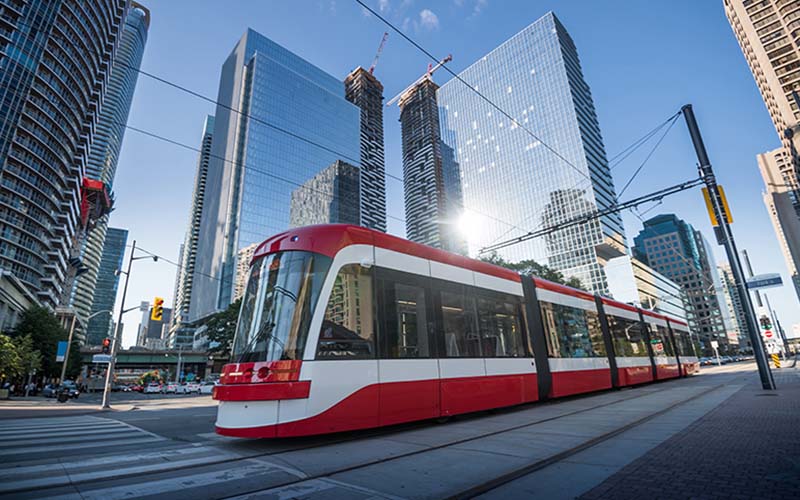
Canada features one of the most modern and extensive networks of public transport systems, including subways, buses, trains, ferries, light rail, and bike-sharing programs in some cities. Major cities like Toronto, Calgary, Ottawa, Montreal, and Vancouver are well equipped with a state-of-the-art public transit network, and the smaller towns and rural areas have limited options on their plate.
Buses
A quite common and convenient mode of road transport that connects the major cities and the outskirts and suburbs over a wide range of routes. Public buses are affordable, and schedules are designed to cater to peak commuting hours and off-peak times without compromising ease and convenience. The bus stops are clearly demarcated with route maps and schedules available online and at transit stations.
Commuter Trains
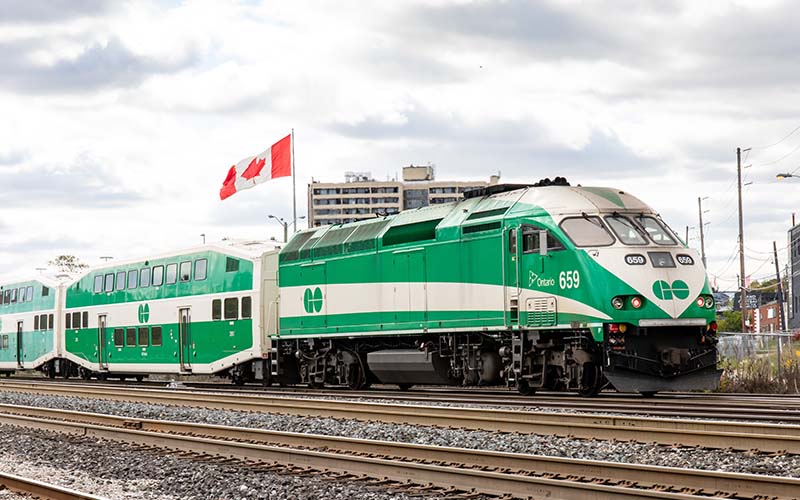
This is a fabulous mode for people commuting from the outskirts to the city center for work or other activities. These trains feature among the modern transportation in Canada, equipped with an efficient process for an on-time schedule per the commuter’s needs. Major cities like Toronto, Montreal, Ottawa, and Vancouver feature established commuter train systems connecting the suburbs to the city center.
Subways and Light Rail
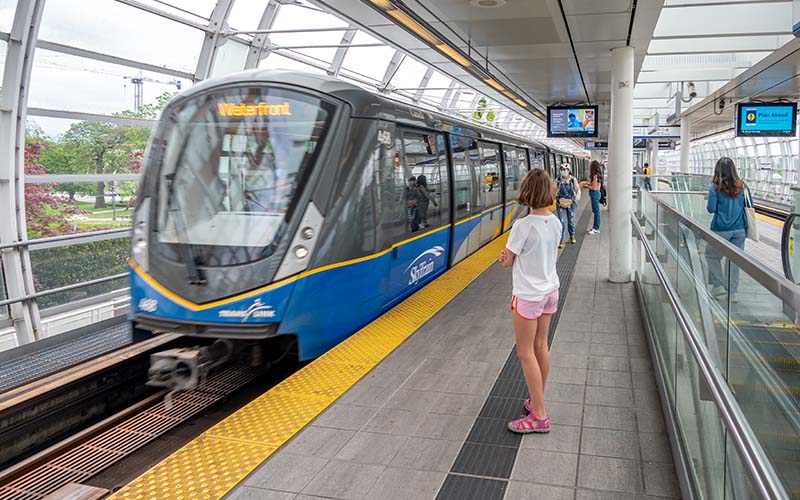
The larger or modern Canadian cities like Toronto, Ottawa, Montreal, and Vancouver feature an extensive world-class subway system or light rail networks that run underground or elevated, connecting the neighborhoods, attractions, and business districts and operating from early morning to late night, with an increased frequent service provisioned during peak commuting hours.
Ferries
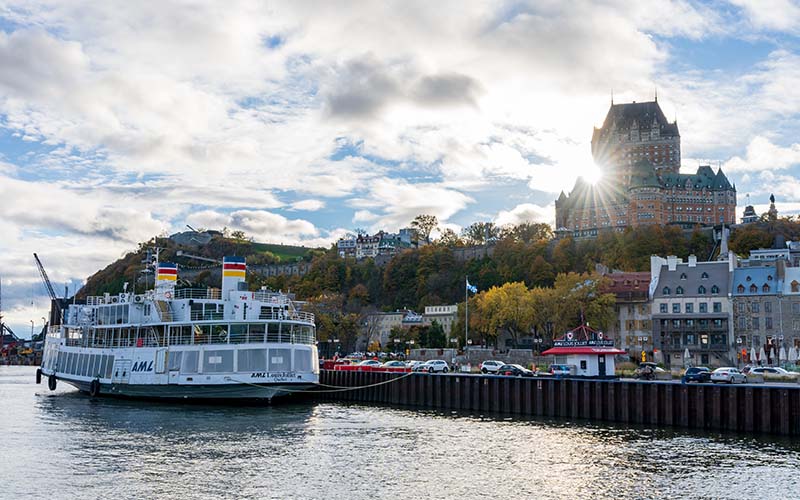
In cities and districts featuring numerous lakes and rivers, ferry services are quite common and the most convenient mode of public transport in Canada. The efficient ferry services help you browse the scenic landscape views of popular cities like Vancouver, Quebec, Halifax, Victoria, and their neighboring islands.
Bike-Sharing Programs
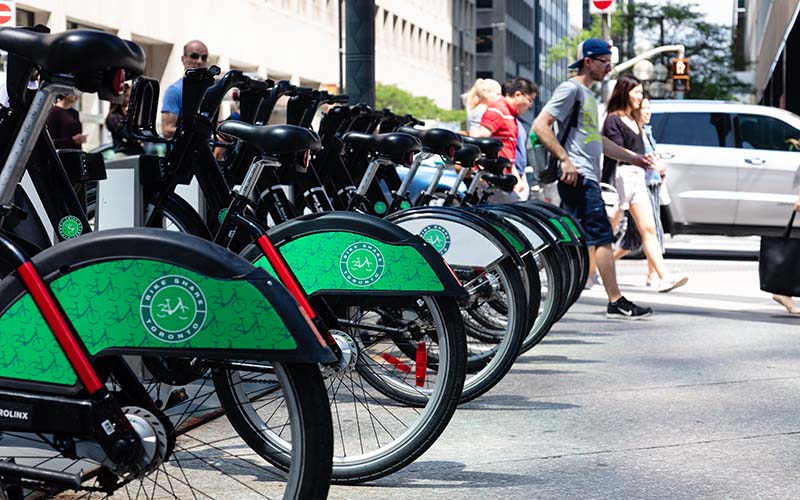
To promote an efficient and eco-friendly transportation mode with enhanced accessibility, many Canadians opt for bike-sharing programs that help residents and visitors rent bicycles from designated stations and explore the beautiful cities at their own pace. Bike lanes and the cycling-friendly infrastructure within these modern cities make biking safe, convenient, and enjoyable.
Ticketing and Payment modes
Several payment modes are available such as cash, tokens, mobile apps, and contactless smart cards. Several cities offer rechargeable passes or transit cards to be used within a timeframe. You can check with the nearest transit station or visit the local authority’s website to understand the payment modes and any discounts in fares, if available, in more detail.
Planning your journey for using public transport in Canada
As you embark on an enjoyable journey in public transport in Canada, you should do your research well in adapting to the schedules, routes, maps, and transit apps available to help you navigate through the best routes, understand the estimated travel times, and understand the service disruptions in detail. Once familiar with the systems’ operating hours and service frequency, traveling during peak or off-peak hours becomes a formality.
Safety and Etiquette
The authorities lay down safety guidelines and etiquette for public transport in Canada. The guidelines have in-depth details about designated waiting areas and instructions to be followed at transit stations. Be vigilant of your surroundings and belongings when you travel. Giving up seats for pregnant ladies, disabled passengers, and the elderly is a routine activity and is always appreciated. In Canada, it’s best to respect the regulations – steer clear of snacking or sipping on public transit unless it’s explicitly permitted to avoid doing in Canada.
Accessibility
The Canadian public transport authorities have designed the public transportation modes in such a way as to make them inclusive and accessible and provide a barrier-free travel experience for the entire population, especially for disabled people. Most transit stations have designated spaces for wheelchair users, elevators, and ramps. Do check for the accessibility features before you plan, as they are specific to each public transport system you use.
Here are some extra tips and tricks to follow if you are using public transport in Canada:
Explore Transport Modes
Besides standard buses, subways, and commuter trains, some Canadian cities may offer light-rail trains, streetcars, trams or even ferries, which can provide faster, more scenic, or more convenient transportation. Research all your options.
Transfer Between Modes
You can typically use the same ticket or transit pass to transfer seamlessly between buses, trains, subways, etc. You may need to get a paper transfer slip from the driver or ticket machine as proof when boarding your first vehicle.
Learn Road Rules and Signs
Study provincial and territorial handbooks and resources to learn all road regulations, including speed limits, traffic lights and signals, lane markings, right-of-way for turns, pedestrian right-of-way, and the vast array of road signage. Do this before driving to safely navigate Canadian streets and highways.
Travel Between Cities or Provinces
You have options like flights, trains, or long-distance coaches to travel to destinations across Canada. You can book tickets on travel company websites, mobile apps, or by phone or in person. Compare fares, schedules, amenities, etc., to choose what works best for your trip needs.
Use Active Transport
Walking and bicycling are cheap, eco-friendly, and healthy ways to get around locally. Follow the rules and safety best practices for pedestrians and cyclists designated by your municipality, like using crosswalks and bike lanes. Use lights and helmets.
Get a Compass Card or Transit Pass
Many transit systems offer reloadable cards or monthly passes that provide discounted fares compared to cash payments per trip. Cards can be tapped for smooth boarding, and passes offer unlimited travel. Always tap out if required when existing to ensure accurate fares.
Use Transit Apps
User-friendly mobile apps provide public transit information in real-time, like schedules, arrival predictions, service alerts, trip planning, fares, and even mobile ticketing. Popular apps include Transit App, Moovit, RocketMan, and most transit agencies’ official apps like TransLink or TTC.
Pack Light
Due to the limited vehicle space, avoid bringing large, bulky items, especially during crowded commuting periods. Backpacks and small bags that fit on your lap or under the seat are ideal. Heavy luggage should be kept to a minimum.
Mind the Gaps
When boarding or disembarking trains, streetcars, and subways, be cautious of the space between the vehicle and the platform, known as the platform gap. Pay attention to the markings denoting where train doorways will stop, and make sure no items get caught. Step quickly and carefully, and be aware of gaps when boarding low-floor buses; wait for the kneeler to engage before stepping up.
Get Transit Subsidies
Find out if your employer offers subsidized public transit passes as a work benefit. Many Canadian corporate wellness programs subsidize monthly passes to promote green commuting options for staff, so they save 25-100% off regular fares. If offered, take advantage of riding transit at a reduced rate.
Conclusion
A wide range of public transport in Canada allows residents, tourists, and visitors to navigate beautiful cities and browse the city’s magnificent attractions efficiently. All the public transport in Canada is designed to provide a fair degree of convenience and support an eco-friendly navigation mechanism. Familiarize yourself with the local systems and ticketing journey, and use the available resources to enjoy a seamless and barrier-free transport experience in Canada.
FAQ’s